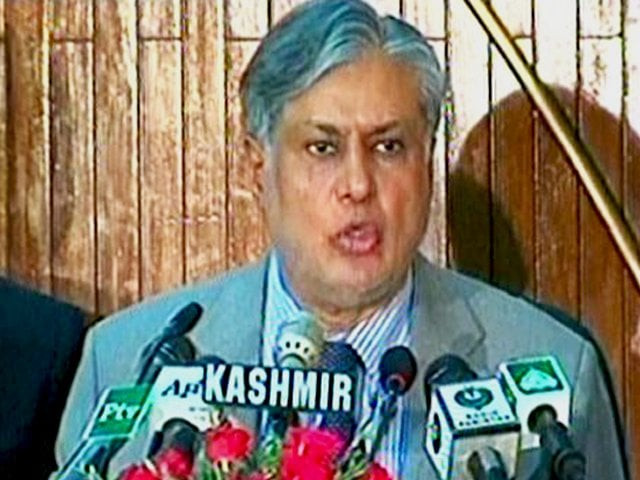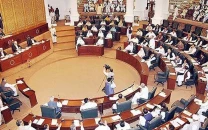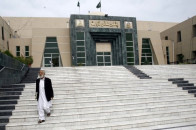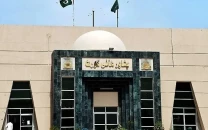Economic survey 2013-14: GDP growth target missed but trending upwards
Growth in GDP can be attributed to signficant growth trends in the Large Scale Manufacturing sector

Finance Minister Ishaq Dar presenting the Economic Survey. SCREENGRAB: EXPRESS
The growth momentum is broad based on and all the three major sectors namely agriculture, industry and services have provided support to improve economic growth. However, growth in GDP can largely be attributed to growth trends in the Large Scale Manufacturing sector.
The GDP growth rate was consistent with assumptions of minor improvement in energy supplies, fiscal adjustment and better investment opportunities. The government will point towards the increase in the GDP growth rate as a sign that steps taken by the government, such as a comprehensive power policy, initiatives of privatisation, youth training and employment training programmes are improving the country’s business climate and creating a positive environment for economic growth.
Inflation
Consumer Price Index (CPI) inflation for 2013-14 was targeted at 8.5% but inflation increased by 8.7% during July-April 2013-14 as against an increase of 7.8% in the comparable period.
The surge in food inflation was more pronounced as it escalated by 9.3% in this period as against 7.1% last year. Non-food inflation increased by 8.2% compared to 7.5% last year. The non-food inflation increased by 8.2% compared to 7.5% last year. Core inflation stood at 8.5% in the first ten months compared to 9% last year. Average inflation for the FY14 is likely to hover between 8.5-8.8%.
The current fiscal year started with single digit inflation at 8.3 percent in July 2013 and maintained this trend till October 2013 on account of lower international market prices, domestically balanced supply position and appropriate monitoring of prices.
Inflation increased in November 2013 to 10.9 percent on account of electricity prices adjustment combined with short term supply disruption of commodities due to cyclical factors.
Inflationary pressures have tapered since December 2013, headline inflation CPI declined to 7.9 percent in January and February 2014. However, it again surged in March and April 2014 at 8.5 percent and 9.2 percent.
The factor behind was increase in food inflation which increased to 9.9 percent on account of demand supply gap. Inflation during July-April 2013-14 averaged at 8.7 percent. There are many factors for increase in inflation. However, food prices were the important stimulant to drive the overall inflation.



















COMMENTS
Comments are moderated and generally will be posted if they are on-topic and not abusive.
For more information, please see our Comments FAQ